 With the recent release of Jeff Passan's The Arm and the nearly-simultaneous and heart-wrenching explosion of Daniel Winkler's elbow due to a Timing problem that was, in my opinion, caused by his Inverted W, I thought it was time to revisit the topic of the Inverted W and (re-)introduce some truth into the conversation.
With the recent release of Jeff Passan's The Arm and the nearly-simultaneous and heart-wrenching explosion of Daniel Winkler's elbow due to a Timing problem that was, in my opinion, caused by his Inverted W, I thought it was time to revisit the topic of the Inverted W and (re-)introduce some truth into the conversation.
In sum, the truth about the Inverted W is this; the Inverted W is NOT a primary problem. It is NOT a problem in and of itself. The problem is that the Inverted W can -- and I mean CAN and not always DOES -- create a Timing problem where the pitching arm isn't in the right position when their shoulders start turning, which is often, but not always, when their front foot plants.
That will tend to overload the pitching arm, creating a quick and easy velocity boost in the short term and then elbow and shoulder problems in the long run.
Of course, the pitching mechanics industry doesn't want you to know this, because otherwise it would be much harder for them to promise and deliver quick and easy velocity increases.
The Truth About the Inverted W
Given Jeff Passan's infidelity to the truth, let's establish exactly what we've each said about the Inverted W. In my analysis of Jeff Passan's Inverted W tweet, I start off with his statement...
The Inverted W causing Tommy John surgery is a myth. Repeat: The Inverted W causing Tommy John surgery is a myth.
Similarly, in my comments on Jeff Passan's claims that the science doesn't support my work or theories, I quote him...
While I appreciate in many aspects of life somebody who is as certain as he is about things, in this case, I'm sorry.
The science just does not support it...
I'm sorry but the science simply doesn't back him up.
It just doesn't.
So what have I (actually) said and claimed and what does the science (actually) say?
What I've Said About the Inverted W
My earliest statement about the Inverted W dates back to 2007...
In Frame 28, Mark Prior is at a position that I call the Inverted W (or simply The M). Notice how his PAS elbow is both above and behind his shoulders and his PAS forearm is hanging down nearly vertically beneath it.
This position isn't damaging in and of itself.
However, by coming to this position, Mark Prior is ensuring that his pitching arm will not be in the proper position at the moment his shoulders start to turn. As with pitchers with other timing problems like rushing, because his pitching arm is so late, he will dramatically increase the stress on both his elbow and shoulder.
As I discuss in my analysis of Stephen Strasburg's pitching mechanics, Tom Verducci found that he couldn't improve on my summary of the problem, so he just plagiarized it.
The problem is the timing associated with that move, not the move itself.
I again summed up my position with respect to the Inverted W in a 2010 interview that led to the study of the Inverted W.
What the not so durable guys do is they take their elbows back but they also take them up. Now, that's actually painful to do, but it's not that bad in and of itself. The problem is that when you take the elbows back and up, you can end up with a Timing problem.
Pay attention to my use of the word "can," in particular.
At the time I said that, I knew the Inverted W was creating Timing problems for some pitchers, Anthony Reyes being a prime example.
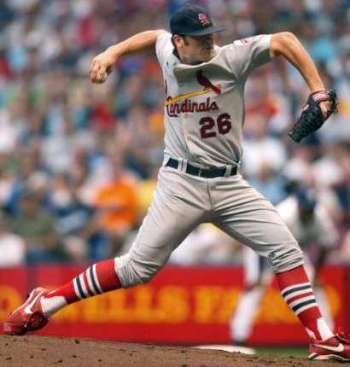
Anthony Reyes
However, not every pitcher who made the Inverted W had arm problems, with Tom Glavine being Exhibit A.
But, can the Inverted W cause a Timing problem?
See how Anthony Reyes' pitching arm is internally rotated and pointing down while his glove side foot is planted?
That's the definition of a Timing problem.
At the time, I didn't know the precise incidence of Timing problems in pitchers who made the Inverted W, so I deliberately used the word "can" rather than a m ore definitive word like "does."
Daniel Winkler and the Inverted W
Let's talk about root cause analysis and why and how the Inverted W got Daniel Winkler and will get a number of other pitchers.
I first noticed Daniel Winkler's pitching mechanics a year ago.
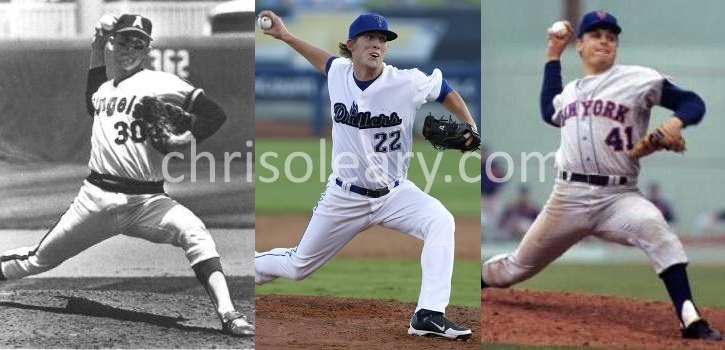
Nolan Ryan, Dan Winkler, and Tom Seaver
Winkler's mechanics are so different from what I call Dominant & Durable pitching mechanics, that I put together the picture above to try to make the difference clear.
Jeff Passan would have you believe that the Inverted W...
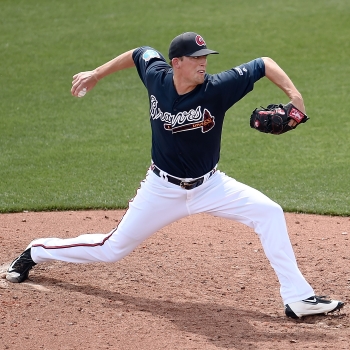
Daniel Winkler
...which is how I would describe the arm action of Daniel Winkler...

Daniel Winkler
...is a "benign motion."
I would hope Dan Winkler's 2014 Tommy John Surgery and 2016 elbow fracture make clear the absurdity of that claim.
It's at best wishful thinking, and in my opinion deliberately deceptive.

Daniel Winkler
In Frame 22, Dan Winkler's pitching arm side forearm is internally rotated, which is the "Inverted" part of the Inverted W. The thing to pay attention to is how, in Frame 23, you can see more of the numbers on Dan Winkler's back and less of the letters on Dan Winkler's chest. That means his shoulders are turning, and his arm is under load, while his pitching arm is at best flat.
That is the definition of a Timing problem.
Continuing Relevance
There are a number of other active pitchers who make the Inverted W and who are vulnerable for injury risks as a result.
As I discuss at length in my analysis of Sonny Gray's pitching mechanics, and more briefly below, Sonny Gray's problem isn't that he makes the Inverted W, but that he holds it into Foot Plant.
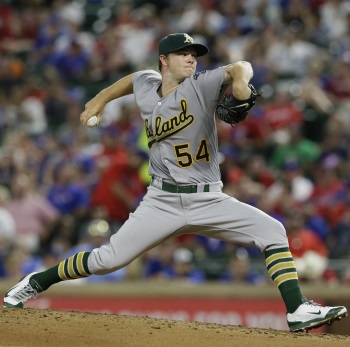
Sonny Gray
Carson Fulmer is another pitcher who makes the Inverted W and then holds it into Foot Plant.

Carson Fulmer
That creates the Timing problem that is the underlying concern when it comes to pitcher health.
Nick Tropeano was just the latest victim of the Inverted W, and predictably so.

Nick Tropeano
The (root cause of the) problem isn't that Nick Tropeano makes the Inverted W.
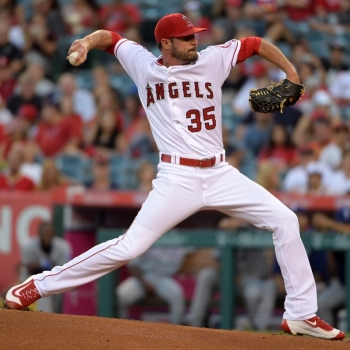
Nick Tropeano
Rather, the root cause of the failure of Nick Tropeano's UCL is that he holds the Inverted W into foot plant, creating a significant Timing problem that I call Flat Arm Syndrome.
Root Cause Analysis
Let's examine exactly how the Inverted W is causing problems for a number of pitchers.
Daniel Winkler
Can the Inverted W cause a Timing problem, as I believe?
The clips below are the smoking gun.
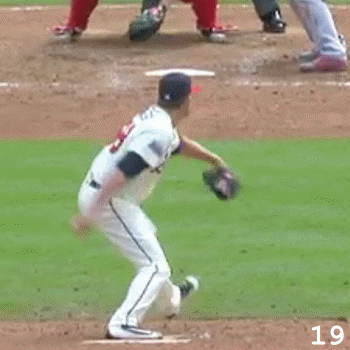
Daniel Winkler
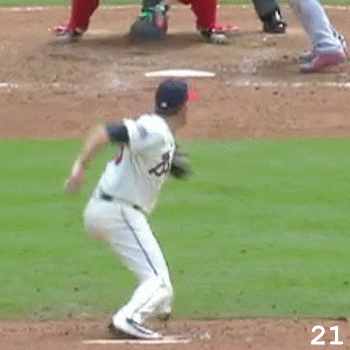
Daniel Winkler

Daniel Winkler
In Frame 22, Dan Winkler's pitching arm side forearm is internally rotated, which is the "Inverted" part of the Inverted W. The thing to pay attention to is how, in Frame 23, you can see more of the numbers on Dan Winkler's back and less of the letters on Dan Winkler's chest. That means his shoulders are turning, and his arm is under load, while his pitching arm is at best flat.
That is the definition of a Timing problem.

Daniel Winkler

Daniel Winkler
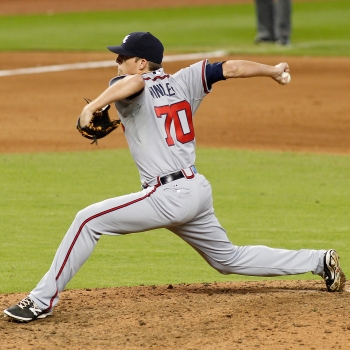
Daniel Winkler

Daniel Winkler
Sonny Gray
As I discuss at length in my analysis of Sonny Gray's pitching mechanics, and as you can see in the picture below of Sonny Gray, the problem with his pitching mechanics isn't the Inverted W itself.

Sonny Gray
Rather, the problem is still holding the Inverted W into foot plant, which is the definition of a Timing problem.
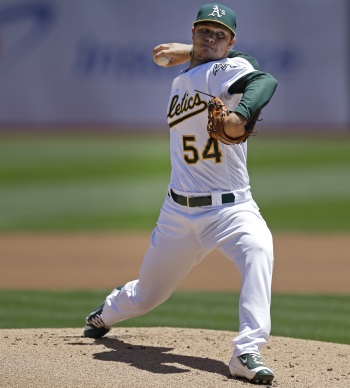
Sonny Gray
The pic above shows that Sonny Gray suffers from a serious Timing problem that I call Flat Arm Syndrome.
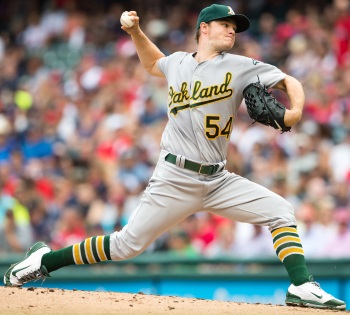
Sonny Gray
What's worse, Sonny Gray holds a prematurely pronated position as his arm starts to externally rotate, making it even later and putting even more load on his arm.
What the Science (Actually) Says About the Inverted W
In terms of what the science actually says both in general and with respect to my work, I've written a number of pieces on that subject...